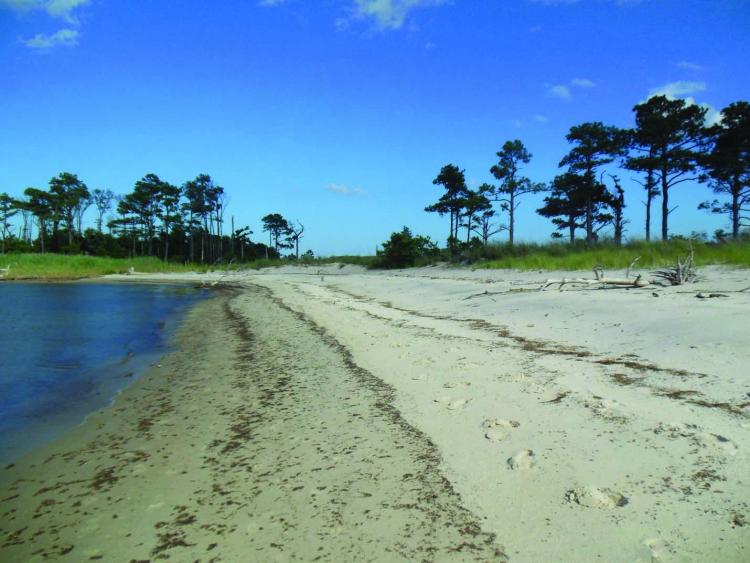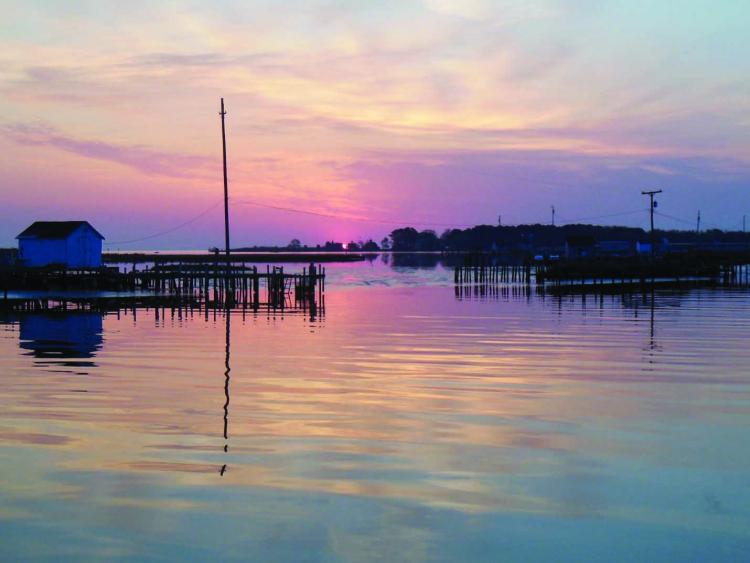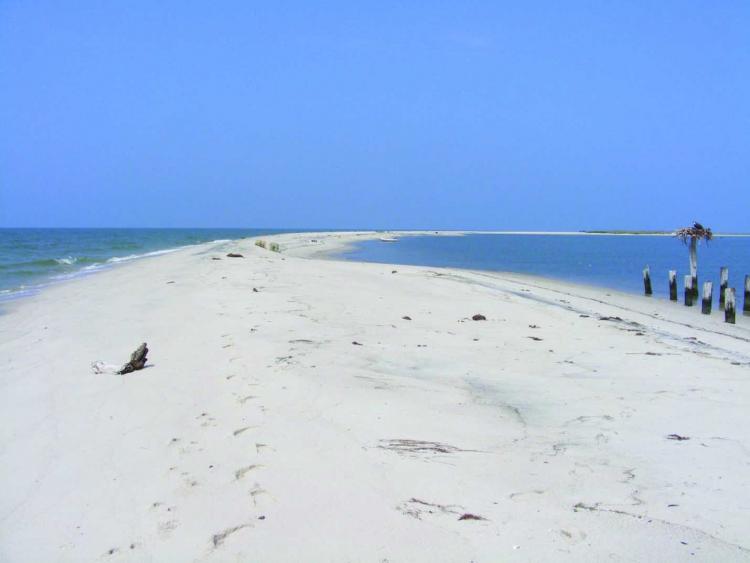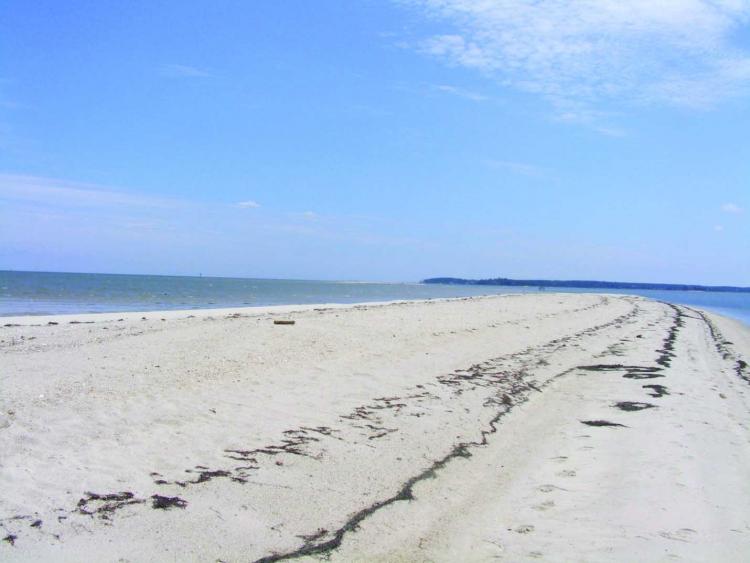Sail South on the Chesapeake This Season
From the freshwater river sources to the salty sea at the Capes, the Chesapeake Bay has varied atmosphere and character. The Upper Bay has activity galore, and the hustle and bustle of modern life is never far. The Southern Bay is thoroughly different.

South of Solomons, the Bay changes. South of the Potomac the Bay widens. In the center you may be out of sight of land on a hazy summer day. There are hundreds of creeks to explore, but if you are looking for marinas, the daily runs between destinations are a bit longer than up north. There are fewer boats. It is easy to get a marina slip reservation or find an anchorage with no other boats. The shores are less developed, and anchorages are secluded. Often there are no houses in sight, so the nights are darker and the stars brighter.
You will usually find a better breeze and will be comfortable sleeping at night at anchor. The water salinity increases as you head south, so the trees hang back from the shores a bit leaving the Bay rimmed with sandy beaches. There are deserted beaches with seabirds nesting in the sand because there are no humans to bother them. Pelicans and dolphins will frequently be your companions. By the time you get south of the Rappahannock, the salinity may get high enough that you are rid of sea nettles and able to swim once again.

Bay cruisers know that Solomons is both a great destination with good marinas, restaurants, and a marvelous marine museum; it is also a good staging point for crossing the Potomac. Heading south from Solomons, it is about 40 miles to the next harbor, either Reedville or Tangier. At the mouth of the rivers on the Chesapeake, the water can get “lumpy” when the wind opposes the current. As the largest tributary to the Bay, when the current and wind are opposed to each other, the Potomac’s mouth should be respected. Under those conditions you will find that ducking into Tangier Sound through Hoopers Strait or Kedges Straits and exploring the Eastern Shore will be a more comfortable ride.
This will take you to the remote and undeveloped parts of the lower Eastern Shore, countless beautiful and secluded anchorages, and several small towns such as Deale Island, Onancock, and Crisfield, each of which is worth visiting.
From Crisfield you can enter the pristine Pocomoke River, which winds its way through a cypress swamp. This is a magical place. If you shut off your engine, you will not hear any sounds of human activity. This is the wild Bay that John Smith explored over 400 years ago.
Most of the boats headed south from Solomons make the 10-mile crossing of the Potomac with ease and stop in Reedville or Deltaville, VA. Between these two destinations are the rivers and creeks of Virginia’s Northern Neck. Whether you choose the broader waters of the Great Wicomico or the well protected shelter of Mill Creek, you will know right away that you are in the Southern Chesapeake. Dividing Creek has both hurricane holes and anchorages open to summer breezes. Here you will find shore access to the sandy beaches of Huglett Point State Park.
The southernmost anchorage on the Northern Neck is Little Bay at the mouth of Antipoison Creek (where the story has it, Captain John Smith’s stingray wound was cured by the local indigenous population). This half-mile-wide anchorage may host five or six boats on a weekend night but is likely to be vacant mid-week. Here you have your choice of three long sandy beaches to explore. If you are feeling adventurous, you can take your dinghy through the marshes and out into the Rappahannock River to get a meal and a drink at the Tiki Bar at Windmill Point Marina. After decades cruising and exploring the Chesapeake and visiting hundreds of anchorages, this is by far our favorite spot on the entire Bay.

No Southern Bay cruise should miss Tangier Island. For your stay in Tangier, you will dock at Parks Marina. Milton Parks has worked the Bay for 75 of his now 88 years. Quite the raconteur, Milton tells marvelous stories about living and working on the water from one end of the Bay to the other.
Tangier has only one industry: seafood. Crabbing, oystering, and fishing have made up the economy of this island for 350 years. Tangier Island’s thoroughfare, lined with crab shanties, many built on stilts out in the water, offers a view of the working Chesapeake that has faded from almost every other harbor. Electrical power to the stilted outbuildings supplied by overhead cables is used to pump water to the peeler trays and to refrigerate the peelers immediately after they shed. Tangier is a major supplier of soft crabs. The Tangier History Museum and Cultural Interpretive Center is perhaps the most important museum about Chesapeake Bay watermen’s lives. This small museum put together by the families of Tangier speaks to the dangers, hardships, and lives of the working waterman all over the Chesapeake.
Another charming Eastern Shore town is Onancock, located five miles up scenic Onancock Creek. Many of the old homes have been restored, and it is a lovely village for a stroll through the boutiques and art galleries. Mallards at the Wharf is a popular restaurant with cruisers, but the village has several nice restaurants and the Corner Bakery with fresh bread and sticky buns for breakfast.

Below Onancock is the old railroad ferry terminal town of Cape Charles. Recent development of high-end homes and a large marina in Kings Creek have swelled the population. The newly renovated yacht harbor attracts cruisers from far and wide. Check the SpinSheet calendar for upcoming events. The Tall Ships Festival, Clam Slam Festival, and boat docking contests sell out all the available slips.
A cruise though the Southern Bay should also include a visit to Yorktown. Whether you stay at the marina or on one of the moorings just outside, this is a town that will provide you with days’ worth of fun and exploration. The Yorktown Battlefield Visitor Center and the Yorktown Victory Center will each entertain you for a day, and in between do not miss the Watermen’s Museum.
The Southern Chesapeake Bay is a cruising ground of great history and beauty. What you will not find is hustle, bustle, and noisy crowds or a city the size of Annapolis or Baltimore until you enter Hampton Roads.
By Tom Hale




